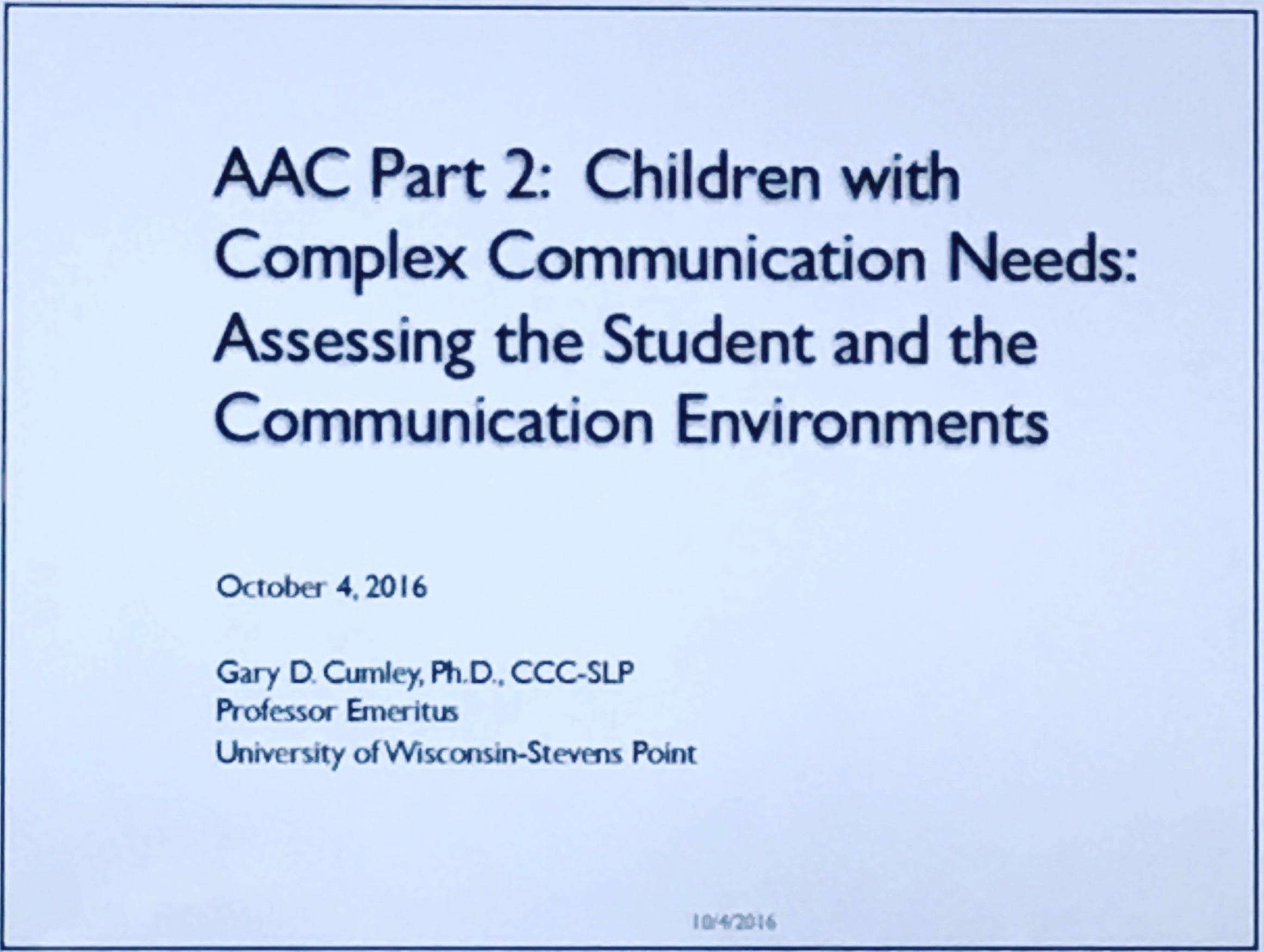October is AAC Awareness Month! All this week I am attending a live webinar series on SpeechPathology.com called:
2016 Nancy McKinley Lecture Series: Topics in AAC

Day 2
AAC Part 2: Children with Complex Communication Needs: Assessing the Student and the Communication Environments
Presenter: Gary D. Cumley, PhD, CCC-SLP
Today, University of Wisconsin-Stevens Point professor emeritus Gary Cumley, PhD, CCC-SLP continued discussing the AAC assessment process, this time focusing on the student (individual - because, really, this can be applied to adults, too) and the environments.
THE STUDENT
Dr. Cumley spent a good deal of time highlighting the importance of determining the individual's level of functional communication, using Dr. Patricia Dowden's (University of Washington) 1999 "types of communicators" as a guide.
- emergent communicator: uses non-symbolic means (e.g. gestures, behaviors) or no reliable form of symbolic communication
- context dependent communicator: uses symbolic communication (reliably uses some form of AAC system) but it is dependent upon the context (e.g. only during circle time)
- independent communicator: uses symbolic system of communication reliably across contexts
The communication partner plays a very important role.
Next, he discussed the importance of assessing receptive communication skills as well as expressive:
- how well does the individual attend to the communication partner?
- how well does (s)he follow directions? (and if not, why?)
- are visual supports needed to facilitate understanding?
- does (s)he respond appropriately to yes/no questions?
- does the individual appropriately make choices when given an array of options?
Be a sponge! Soak everything in.
Assess the individual's level of symbolization (symbol assessment based on Mirenda & Locke 1989): real object, photograph, colored black-line drawing, and word level.
Since many individuals with complex communication needs do try to talk/vocalize, Dr. Cumley discussed the importance of assessing comprehensibility (often overlooked) versus intelligibility (often included), this time using Dr. Patricia Dowden's 1997 article.
- intelligibility = the degree to which the speech produced (acoustic signal) is understood by the listener
- comprehensibility = variables other than acoustic signal (familiar vs. unfamiliar listener, context)
There are no prerequisites, no reason to wait to assess for or intervene with AAC. If we wait, we can end up with behaviors emerging and/or the individual can end up using non-symbolic communication and the team doesn't understand.
THE ENVIRONMENT
Factors to be considered: communication partner behaviors and attitudes
- attitude (expectations)
- communication opportunities provided (limited?)
- knowledge and skill level (training/education)
- operational (technical, programming understanding)
Complete a Social Network Inventory to look at the individual's entire social network of communication partners, environments, and communication expectations across the spectrum
Look at multiple toos so the individual can be a multi-modal communicator!
And finally (almost): use a feature match approach - fit the student's abilities to the system.
In summary:
- AAC assessment is complex. There is no "recipe" because it needs to be based on the individual's specific challenges.
- MUST: make observations and ask questions!
- Feature match is critical to complete.
- The assessment report should be descriptive, data driven, reader friendly, and use funding agency buzz words.
Check back tomorrow for a summary of Day 3!
Here are links to my summaries for the other lectures in the series this week: